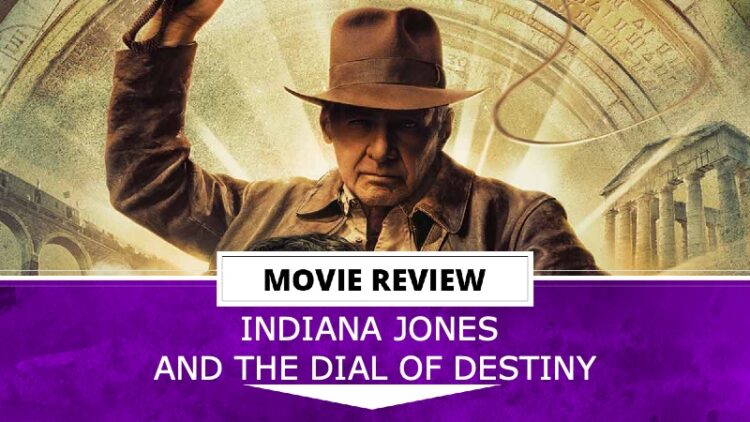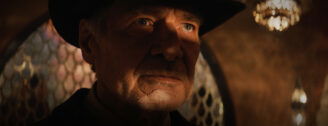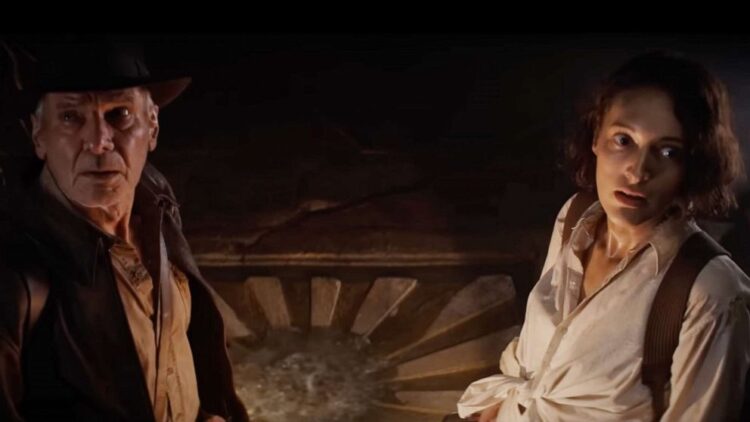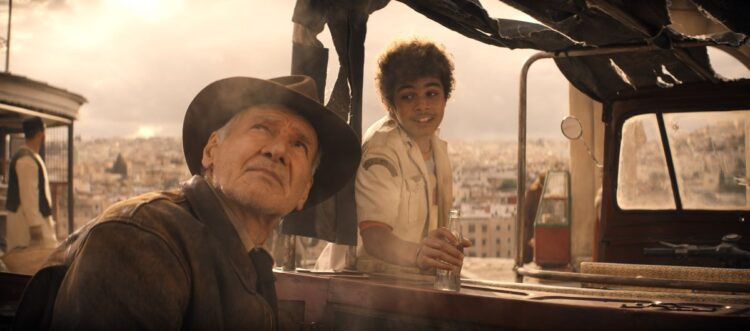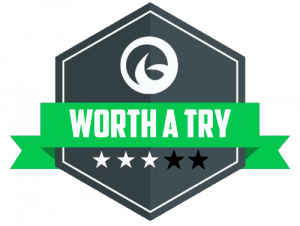According to history—Hollywood history, that is—Indiana Jones began with Steven Spielberg wanting a James Bond-type character and George Lucas saying he had something better. Thus, the iconic archeologist arrived on the scene, whip in hand and fedora on head. He had the charisma of Bond but the adventuring spirit of 50s film treasure hunters. In his 5th and apparently final outing, Indiana Jones and the Dial of Destiny, the character comes full circle in a quest for an ancient dial—for better and for worse.
The Name’s Jones. Indiana Jones.
In borrowing a bit much from Bond, most of the first half involves chase scene after chase scene in various vehicles. Any excavating or exploring gets sidelined. Indiana Jones, joined by his newly introduced goddaughter Helena, dodges baddies who build up a surprisingly high body count. At one point, the two have to evade eels, which irks Jones since they’re a bit like snakes—his famous fear. This motif could sum up the entire film: it feels a bit like an Indiana Jones movie, but not quite.
I have a theory that one can rank Indiana Jones movies by how much they rely on an actual legend or piece of history. Indiana Jones and the Dial of Destiny starts with a prologue in the 1940s involving an actual artifact of myth—and then scraps this to jump to a search for a made-up MacGuffin in the 1960s against former Nazis. Imagine if Raiders of the Lost Ark started with the latter half of the iconic temple scene and then involved Indy ignoring the ark in favor of getting the golden idol back. The hunt for the dial feels somewhat like that.
Finally, halfway through the film, Indy and Co discover some actual ruins! And here, Dial of Destiny discovers some footing. With director James Mangold taking the reins from Steven Spielberg, he settles into a groove once the plot progresses, building on previous films while adding something new. The movie then culminates in an absolutely bonkers finale. And weirdly, it works.
Dial of Destiny vs. Kingdom of the Crystal Skull
Speaking of bonkers endings, you may wonder: How does this film stack up against Indy’s previous outing, the much-maligned Kingdom of the Crystal Skull? To quote Indiana Jones himself, “It’s not the years. It’s the mileage.”
Which is to say, mileage may vary. Overall, it’s not as well-made—from a craft standpoint—as Kingdom of the Crystal Skull. And yet, it’s in some ways the inverse of the previous film. Because while the wild ending of Crystal Skull felt alienating (pun fully intended), this film’s conclusion takes the series back to its roots. Some folks may hate its weirdness, but it does feel like a better finale for this character we know and love, and leans into his values.
Indy and Friends
And while the movie’s heart comes late plot-wise, it consistently ekes through thanks to Harrison Ford as Dr. Indiana Jones. Famous for his curmudgeonliness, Ford seems to relish playing the archeologist one more time. The story’s themes suggest that Indiana Jones’s real discovery is rekindling his passion for adventure. And whenever the message stumbles, Ford swoops in to catch those themes with a heartfelt performance.
Backing him up is Phoebe Waller-Bridge as Helena Shaw. I say backing him up, but her character is a bit of a wildcard—she’s in the chase for the money. Waller-Bridge plays off of Ford well, going toe-to-toe with his gumption, though she isn’t as funny as in her other roles. Toby Jones delights in the part of her dithering father Basil for the prologue.
Ethann Isidore brings charm to Teddy, Shaw’s sidekick. Though the role makes one miss Ke Huy Quan. Thankfully, John Rhys-Davies reprises his role as Sallah, driving Indy on a journey to… JFK airport. But his warmth helps sell the theme of what Indy means to the people around him—someone striving to do what’s right even against insurmountable odds.
And here he’s fighting Nazis once more, somewhat led by Jürgen Voller, played by Mads Mikkelsen. I say “somewhat led” since Voller appears as a put-upon subordinate of a more prominent Nazi officer in the prologue. When he reappears years later under a new name, his own two lackeys seem to drive much of the action. But overall, having Indy’s classic nemeses return as villains up the stakes for the film.
A Full Turn of the Dial
As such, Dial of Destiny attempts to hearken back to the series’ heyday. It acts surprisingly restrained with its fan service, using it sparingly but effectively. The production design relies too much on CGI but tries to evoke the feel of earlier outings. The fights and chases get a bit muddled—it’s often hard to pinpoint what’s happening—but Indy still knows how to take a punch and come back swinging. Like one artifact early in the film, Indiana Jones and the Dial of Destiny doesn’t quite appear to be the genuine article. But if it’s a reproduction, it does enough of a job to conjure up a fitting likeness.
We hope you enjoy our Indiana Jones and the Dial of Destiny Review, and we have other movie reviews for your enjoyment.
- Transformers: Rise of the Beasts Review: MAXIMIZE!!
- Spider-Man: Across the Spider-Verse Review
- The Flash Movie Review – A Solid But Forgettable Multiverse Adventure
Indiana Jones and the Dial of Destiny
Summary
Indiana Jones and the Dial of Destiny grants the iconic fedora-wearing hero one last adventure—with highs and lows. It may lie buried under the originals and feel a bit unlike them in tone and narrative. Still, it has sincere performances and a finale with a thrilling and touching ending for our beloved archeologist.
Pros
- Earnest performances from the cast, especially Harrison Ford.
- Heartwarming theme of rediscovering one’s purpose later in life.
- A bombastically bonkers ending.
Cons
- Can’t capture the sense of wonder or the thrills of the previous films.
- Action scenes get uncharacteristically garbled.
- No Ke Huy Quan cameo.
-
Indiana Jones and the Dial of Destiny


